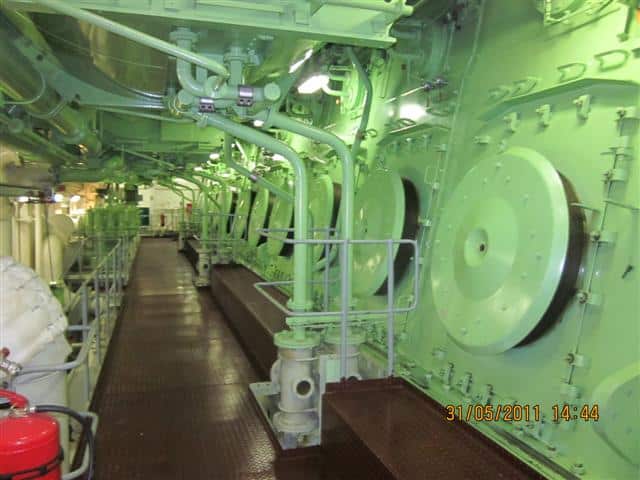

Ships when at sea carry massive amount of fuel, diesel, and lubricating oils in their fuel tanks. These oils are used for running the ship’s machinery, which eventually drives the ship. This huge quantity of fuel on the ship is a ticking bomb which might result in massive explosions and disaster if proper precautions are not taken.
However, it’s not just the fuel tanks that are probable source of fire and explosions but even the machinery that uses fuels. In this article we will learn about one such explosion, which is supposed to be known as the most disastrous explosion and one which takes place in the ship’s main engine. It is called the crankcase explosion.
Causes of Crankcase Explosion
As we all know, for a fire or explosion to take place, there are three basic elements that are required to complete the fire triangle. These three components are – heat/energy, oxygen and fuel. In the presence of all these three elements, in proportional ratio and within the flammable limits, the reaction which causes fire or explosion becomes cyclic.


In the crankcase of the main engine, the oil particles are churned into small particles of up to 200 micro meters in diameter. These small particles cannot ignite readily even with some naked flame. If a hot spot comes in contact with these small particles, it reduces the size of these particles, resulting in the formation of mist, which can be readily ignited with a hot spot.
In the crankcase of the main engine all the three elements required for fire are available. Lubricating oil as the fuel source is sufficiently present, the air as one of the three things necessary is also present and the heat or energy is produced from a hot spot. Thus a crankcase is the most vulnerable spot for explosions as all the three factors required are available in abundance.
What is a Hot Spot?
Hot spot is nothing but the heat source produced as a result of rubbing between two metal surfaces or friction between two metals parts such as piston rod and gland, cross head guides, chain and gear drive etc. The hot spot is generally caused by improper maintenance and insufficient or less clearance.
When the oil comes in contact with the hot spot, these oil particles vaporize and smaller particles are formed. These particles move towards the colder region inside the crankcase space and when in contact with the cold region, form a white mist. Over a period of time the formation of mist starts increasing and when sufficient air/fuel ratio is reached i.e. high enough to exceed the lower explosion limit, the mist comes in contact with the hot spot again and in the presence of sufficient temperature results into an explosion.
The extent of explosion will depend upon the amount of mist produced inside. The primary explosion might be mild and sufficient enough to lift the crankcase relief valves but there could be more severe and dangerous effects during secondary explosion.
Secondary explosion
The primary explosion produces a shock wave which propagates inside the crankcase with increasing speed and distance traveled. This shock wave has a breaking effect which further reduces the size of oil droplets, producing more fuel for ignition. Now the pressure front is followed with a low pressure area which tries to suck in more air from outside. This allows the air to enter in the scavenge space through leaky piston gland or leaky relief valves.
This new air and new supply of fuel produced after first explosion comes in contact with hot spot, causing another explosion, which is extremely severe as the amount of fuel is high now. This explosion is known as secondary explosion and it causes very severe damage to engine plating. Crankcase explosions have been a result for the loss of several lives of people in the past.
Thus proper maintenance and checks is the key to prevent such explosion.
Reference: Marine low speed engines by Dr. Denis Griffiths.










We believe that knowledge is power, and we’re committed to empowering our readers with the information and resources they need to succeed in the merchant navy industry.
Whether you’re looking for advice on career planning, news and analysis, or just want to connect with other aspiring merchant navy applicants, The Marine Learners is the place to be.